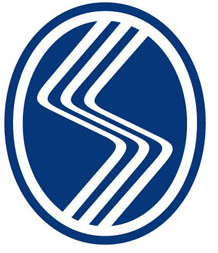Bu çalışmada, futbol ve hentbol oyuncularının hazırlık dönemi antrenmanlarının maksimal oksijen alımı, anaerobik eşik ve izokapnik buffering fazı değerlerine etkisinin incelenmesi ve birbirleriyle karşılaştırılarak branşlar arası farklılıkların olup olmadığının ortaya konulması amaçlanmıştır. Çalışmaya yaşları 15-17 arasında olan, 10 futbolcu, 10 hentbolcu olmak üzere toplam 20 gönüllü erkek sporcu alınmıştır. Sporcuların VO2max, anaerobik eşik ve izokapnik buffering fazı değerlerini tespit etmek amacı ile şiddeti giderek artan egzersiz protokolü uygulanmıştır. Çalışmada sunulan verilerin tümü ortalama±standart sapma olarak verildi. Verilerin normal dağılıma uygunluğu Shapiro Wilk testi ile incelenmiştir. Sporcuların ön test- son test sonuçları için bağımlı gruplarda t testi uygulandı. Hentbolcuların ve futbolcuların değerlerinin karşılaştırılması için bağımsız gruplarda student t testi kullanıldı. p<0,05 ile altındaki değerler istatistiksel olarak anlamlı kabul edildi. İstatistik hesaplamalarının tümü Windows için yazılmış olan SPSS 17.0 paket programı kullanılarak yapıldı. Sporcuların anaerobik eşik ve solunumsal eşik değerlerinin belirlenmesi için, lineer regresyon analizleri SigmaPlot programı (SigmaPlot 12.0, Systat Software Inc., Chicago, USA) kullanılarak yapıldı. Çalışmaya katılan futbolcuların ve hentbolcuların yaş değerleri sırasıyla 15,60±0,52 yıl, 15,90±0,32 yıl, , boy değerleri ortalaması 178,00±3,68 cm, 179,10±5,86 cm, spor yaşı değerleri ortalaması 5,10±1,37 yıl, 5,10±1,79 yıl olarak tespit edilmiştir. Çalışmanın bulguları incelendiğinde hentbolcuların VO2max, anaerobik eşik ve izokapnik buffering fazı değerleri arasında istatistiksel olarak anlamlı farklılık görülmezken (p>0,05), futbolcuların VO2max(lt/dk) ve Solunumsal Eşik VO2 (ml/dk) parametrelerinde istatistiksel olarak anlamlı farklılık görülmüş (p<0,05), diğer parametrelerde anlamlı farklılık görülmemiştir (p>0,05). Futbolcular ve hentbolcuların ön testleri ve son testleri birbirleri ile karşılaştırıldığında aralarında istatistiksel olarak anlamlı farklılık bulunmamıştır. Yapılan çalışmada, hentbolcular ve futbolcuların kardiyopulmoner egzersiz testi sonuçlarına göre pozitif yönde anlamlı bir farklılık olmamasının, sezon öncesi hazırlık döneminde yapılan antrenmanların aerobik dayanıklılığı artıracak düzeyde olmadığı düşünülmektedir. Ayrıca branşlar arasında da anlamlı düzeyde farklılığın olmaması, branşlar arası oyun kuralları, oyun alanları, teknik durumların arasında farklılık olmasıyla beraber aerobik kapasitelerinin ve ihtiyaçlarının farklı boyutlarda benzerlik gösterdiği kanısını oluşturmaktadır. Takım sporlarında branşlar arası saha kriterleri, oyuncu sayıları ve teknik farklılıklar olmasına rağmen enerji gereksinimi konusunda sporcuların ihtiyaçları belirli bir noktada kesiştiği ifade edilebilir. Özellikle takım sporcularının haftalık antrenman sayıları, sezon içerisinde yapılan müsabaka sayıları değerlendirildiğinde, hem aerobik kapasite hem de anaerobik kapasite bakımından en üst seviyede olmaları gerektiği görüşü ağırlık kazanmaktadır. Anahtar Kelimeler: Futbolcu, Hentbolcu, Maksimal Oksijen Alımı, Anaerobik Eşik, İzokapnik Buffering Fazı
The object of this study is to evaluate the effect of trainings of football and handball players during the period of preparation on the maximum oxygen uptake, anaerobic threshold and values of isocapnic buffering phase, and by comparing them to each other, to determine whether or not there is a difference between branches. A total of 20 volunteer male players aged between 15 and 17 were chosen, with 10 of them being football players, and 10 being handball players. An exercise protocol, the intensity of which is gradually increased, was applied in order to detect the VO2max, anaerobic threshold and values of isocapnic buffering phase for the players. Data presented in the study were provided as a mean±standard deviation. The convenience of data with the normal distribution was evaluated by Shapiro Wilk test. A dependent group t test was applied for the pre-test and post-test results of the players. Student t-test for independent groups was used to compare the values of handball and football players. The values that is equal to and below p<0.05 were accepted as statistically significant. All the statistical calculations were performed using SPSS 17.0 package program for Windows. The linear regression analyses were carried out for the determination of anaerobic threshold and ventilator threshold of the players using SigmaPlot program (SigmaPlot 12.0, Systat Software Inc., Chicago, USA). The age values of the players who participated in the study were 15,60±0,52 years and 15,90±0,32 years, respectively; the mean height values were 178,00±3,68 cm and 179,10±5,86 cm; and the mean sport ages were 5,10±1,37 years and 5,10±1,79 years. When the results of the study are reviewed, it is seen that there is no statistically significant difference (p>0,05) between VO2max, anaerobic threshold and isocapnic buffering phase values of the handball players, whereas a significant difference (p<0,05) is present for the parameters, VO2max(lt/dk) and Ventilatory Threshold VO2 (ml/dk), of the football players, and there is no significant difference (p>0,05) for the other parameters. When the pre-test and post-test results for the football and handball players are compared, it is seen that there is no statistically significant difference between them. In the study, it is thought that the trainings conducted during the preseason preparation period are not sufficiently high to increase the aerobic endurance as there is no positively significant difference according to the cardiopulmonary exercise test of the handball and football players. In addition, it is thought that as there is no significant difference between the branches, the aerobic capacities and requirements vary in terms of different aspects together with difference being present between the game rules, playing field and technical situations between the branches. It can be said that the needs of the players may coincide at a certain point in terms of the energy requirement, although there are some differences between the branches in team sports, such as field criteria, number of players and technical differences. Given the number of trainings of the team players and the number of competition during the season, the opinion that the players should be at the highest level in terms of both anaerobic capacity and aerobic capacity, gains importance. Key Words: Football Player, Handball Player, Maximum Oxygen Uptake, Anaerobic Threshold, Isocapnic Buffering Phase











